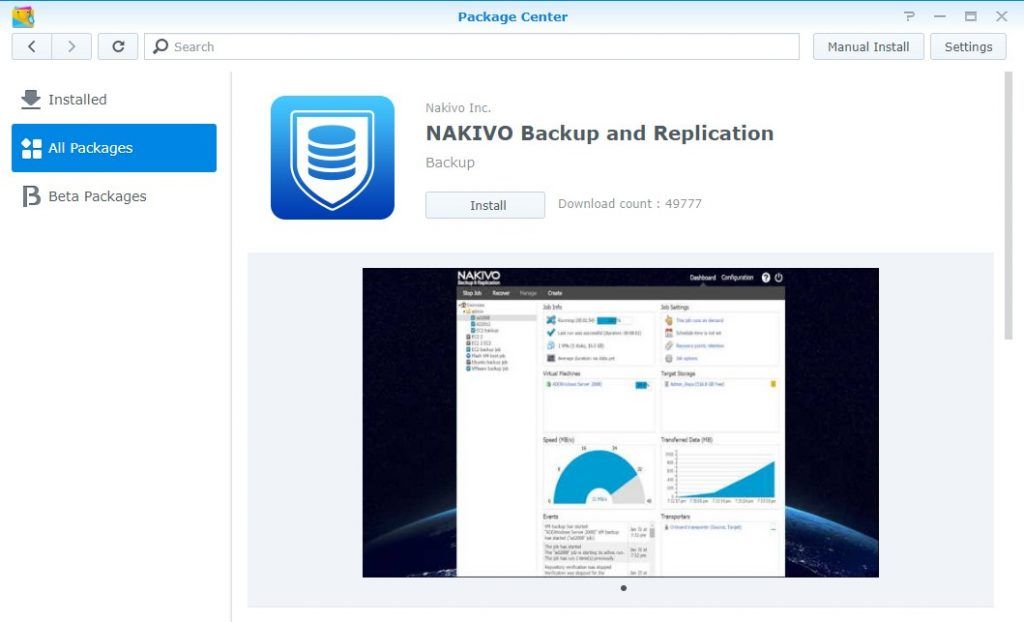In early 2000, IT admins had server rooms full of physical boxes. To backup, admins had to install a backup agent on each server and pray that the backup would complete the job and not affect performance. Most importantly, they were supposed to test the backup. Because in those times, having backup didn’t mean that they were able to restore the data. In the worst possible scenario, when the data center went down, nobody wondered if successful and how long the restoration of complete systems will take. On rare occasions, IT admins tested restore on dissimilar hardware. Another challenge was a restoration in another location, like, for example, another datacenter. I am not saying IT admins were lazy. It’s just that there was rarely time for testing a backup in addition to the already busy day. Restore was long. When a restore was running, it might have affected the computer system’s speed through the company. Also, it’s not like spare servers were lying around in the server room. Being admin was thought at the time. Can you imagine what a person had to go through when he/she realized that hardware was fried and restored from the backup is required?
Solution?
There were companies with a great idea. Instead of selling you the software which you could install, they sold an appliance. An appliance was usually an Unbranded Supermicro server, packed with hard drives. On the server, usually Linux based, their backup solution was running. In most cases, you still had to install agents on the servers. Backup appliances were costly. In those times, Hard drives were expansive, so they charged additional fees for deduplication. a feature that used software algorithms to save space on the backup drives.
Benefits of installing backup software on NAS devices
Free up the load – Backup Appliance vendors had a point. Having backup separated from the main servers, you can reduce the load on your infrastructure. NAS device will use its own CPU, RAM, and DISK so that your cluster won’t get affected when the backup is run. That rule still applies. The difference is that now, the backup appliance will cost you just a fraction of the price you had to pay in the past. You can install Nakivo Backup and Replication on a Synology NAS, and gain a cheap backup appliance.

Replicate offsite, replicate to the cloud, or both- You can use NAS as a backup repository; CIFS or NFS comes to mind. But with Nakivo, you can do so much more with your backup. For example, you can replicate your backup to offsite. You can have another small NAS on your backup location. For smaller environments, it can be an office or even a home office. For larger environments, you can have a bigger NAS with a standby cluster, so in case your main site goes down, you can be up and running in a minute. But with the rise of the cloud, you really don’t have to think about physical secondary location. You can use the power and cost of the cloud. You can replicate your data in the cloud. If the primary site goes down, you can start affected instances.
Nakivo Backup and Replication features galore
Nakivo is loved for many features it has. Nakivo has grown so much during the years.
In the process, it gained many enterprise features that were reserved for expensive products. I covered Nakivo Backup and Replication in many reviews but let’s review the most important features:
- Can be installed on Windows, Linux, Many NAS devices, Raspberry PI, or as a Hyper-V or VMware appliance
- 3-2-1 rule compliance
- Great HTML 5 web interface
- Network acceleration
- Higher performance backup
- Nutanix AHV Integration for agentless, app-aware backup
- Amazon EC2 Replication
- Amazon EC2 Backup
- VMware Replication
- VMware backup
- Hyper-V backup
- Hyper-V replication
- Disaster recovery
- Backup to the cloud
- Replication to the cloud
- Backup to offsite
- Replication to offsite
- Deduplication included
What I love about NAS devices is the cost. Those devices are so affordable for every company size. When you use NAS for a backup, it will save you a Windows server license cost. Plus, you can use its many features, like cloud office, NVR, private dropbox alternative, and the list goes on. The benefit of the NAS is also its size. You can use one for home office offsite backup easily. What about the performance of NAS devices? I am sure, some people are wondering right now, what is the CPU like in those little boxes. NAS boxes got quite powerful lately as you can find even Xenon processors with 10GB network-integrated ethernet, so the performance is no issue here.
Conclusion
Nakivo Backup and Replication is a stellar choice if you would like to turn your NAS into a backup appliance. If you have other locations in your company, you can use a NAS backup appliance to secure those locations as well. Or you can turn your other locations into a backup repository. Don’t think that NAS devices are not powerful enough. If you take a look at Synology FS3600, you will see that an all-flash NAS with Intel Xeon CPU with up to 128GB of ram can handle even the most demanding backup jobs just fine. Oh, one more thing, I mentioned before that those expensive backup appliances charged for deduplication… Nakivo Backup and Replication uses deduplication from the start and is included in the price.


Leave a Reply